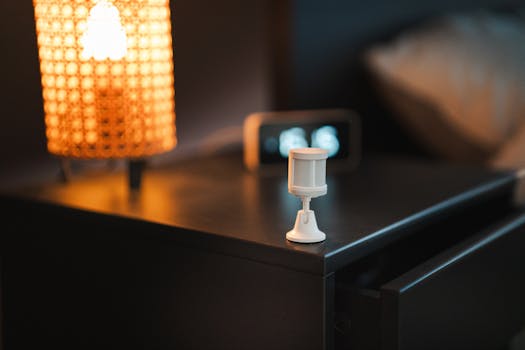
Home Automation in 2025: The Smart Home Ecosystem
Home Automation in 2025 is revolutionizing the way we live, work, and interact with our living spaces. The smart home ecosystem is becoming increasingly sophisticated, integrating various devices, systems, and technologies to create a seamless and convenient experience. In this article, we will explore the latest trends, advancements, and innovations in home automation, and how they are transforming our homes into smart, connected, and sustainable spaces.
Introduction to Home Automation
Home automation refers to the use of technology to control and monitor various aspects of a home, including lighting, temperature, security, entertainment, and appliances. The primary goal of home automation is to create a comfortable, convenient, and secure living environment, while also reducing energy consumption and enhancing the overall quality of life. With the advent of the Internet of Things (IoT), home automation has become more accessible, affordable, and user-friendly, allowing homeowners to control their homes remotely using smartphones, tablets, or voice assistants.
Smart Home Devices and Systems
The smart home ecosystem comprises a wide range of devices and systems, including smart thermostats, lighting systems, security cameras, door locks, and home entertainment systems. These devices can be controlled and monitored remotely using a smartphone app or voice assistant, such as Amazon Alexa or Google Assistant. Some of the most popular smart home devices include:
- Smart speakers, such as Amazon Echo or Google Home
- Smart thermostats, such as Nest or Ecobee
- Smart lighting systems, such as Philips Hue or LIFX
- Security cameras, such as Ring or Nest Cam
- Smart door locks, such as August or Schlage
Advancements in Home Automation
In recent years, home automation has witnessed significant advancements, driven by technological innovations and increasing consumer demand. Some of the key trends and developments in home automation include:
- Artificial intelligence (AI) and machine learning (ML) integration, enabling smart homes to learn and adapt to occupants’ behavior and preferences
- Voice control and voice assistants, allowing users to control smart devices using voice commands
- Increased focus on energy efficiency and sustainability, with smart devices and systems designed to reduce energy consumption and promote eco-friendly practices
- Enhanced security and privacy features, including biometric authentication and advanced encryption methods
- Growing adoption of IoT protocols and standards, facilitating seamless communication and interoperability between smart devices
Benefits of Home Automation
Home automation offers numerous benefits, including:
- Enhanced convenience and comfort, with smart devices and systems streamlining daily routines and tasks
- Improved energy efficiency and reduced energy consumption, resulting in cost savings and a lower carbon footprint
- Increased security and safety, with smart devices and systems providing real-time monitoring and alerts
- Personalized experiences, with smart devices and systems adapting to occupants’ preferences and behavior
- Increased property value, with smart homes becoming a desirable feature for homebuyers and renters
Conclusion
In conclusion, home automation in 2025 is a rapidly evolving field, with significant advancements and innovations transforming the smart home ecosystem. As technology continues to improve and become more accessible, we can expect to see even more sophisticated and integrated smart home systems, enhancing our lives and creating a more sustainable and connected world. Whether you are a homeowner, renter, or simply interested in the latest smart home trends, this article has provided a comprehensive overview of the current state of home automation and its exciting future prospects.






